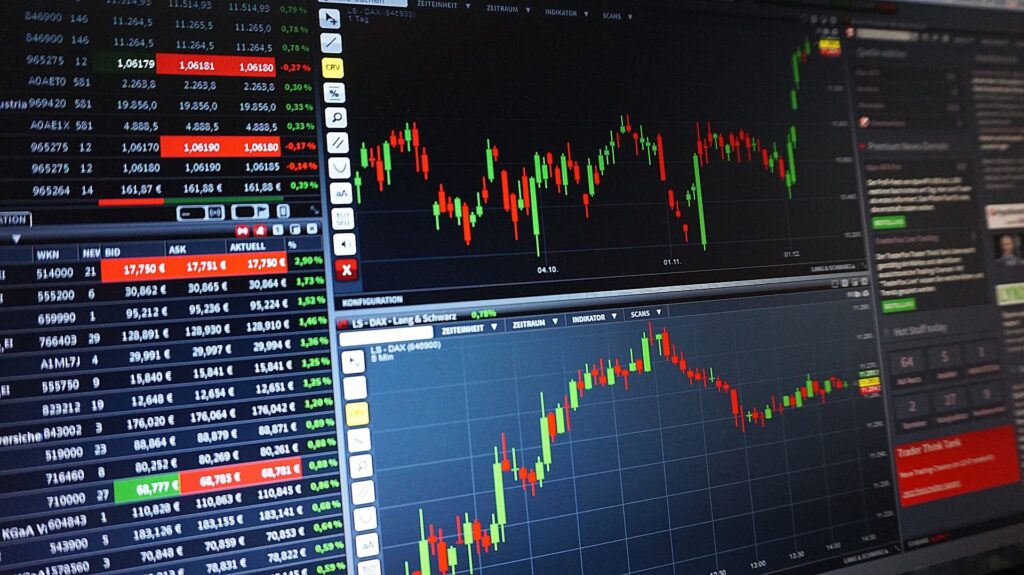Since FX spreads are the main expense associated with trading currencies, traders must be knowledgeable about them. To increase your trading performance, read this article to learn how forex spreads operate, how to calculate expenses, and how to monitor changes in the spread.
WHAT IS A FOREX SPREAD?
A spread exists in every market, including forex. The price difference between two possible locations for a trader to buy or sell an underlying asset is known as a spread. Equities-experienced traders will refer to this as the “Bid”: Ask spread.
An illustration of how the forex spread for the EUR/USD is computed is shown below. We will first determine the purchase price, 1.13398, and then deduct the sale price, which is 1.3404. Following this procedure, we are left with a reading of.00006. Traders should remember that the pip value is then indicated on the EUR/USD as the fourth digit after the decimal, resulting in a total spread of 0.6 pips.

Let’s look at the actual expense experienced by traders now that we understand how to compute the spread in pips.
HOW TO CALCULATE FOREX SPREAD AND COSTS?
Remember that the spread is just the asking price of a currency pair less (minus) the bid price before we compute the cost of a spread. Therefore, 1.13404-1.13398 = 0.00006 or 0.6 pip in the case above.
We may purchase the EUR/USD at the moment’s price of 1.13404 and complete the transaction at a selling price of 1.13398 using the quotations from above. That implies that a trader would pay 0.6 pip in the spread as soon as our transaction opens.
We must now multiply this amount by the pip cost while considering the total number of traded lots to get the overall spread cost. You would spend a total of 0.00006 (0.6 pip) X 10,000 (10k lot) = $0.6 when trading a 10k EUR/USD lot. The spread cost for a normal lot (100,000 units of currency) would be 0.00006pips (0.6pips) multiplied by 100,000 (1 standard lot) to equal $6.
You will need to convert your account’s currency, such as GBP, if it is not US dollars.

UNDERSTANDING HIGH AND LOW SPREAD
It’s crucial to remember that the FX spread might change during the day, ranging from a “high spread” to a “low spread.”
This is so because a variety of variables, such as volatility or liquidity, may have an impact on the spread. You’ll see that specific currency pairing, such as those of developing markets, have wider spreads than those of major currencies. Compared to emerging market currencies, your leading currency pairs trade in more significant quantities, and under normal circumstances, higher transaction volumes tend to result in narrower spreads.
Furthermore, it is generally known that spreads may widen, and liquidity can decrease before significant news events and in the intervals between trading sessions.
High spread:
A wide gap between the bid and ask prices is a high spread. Unlike significant currency pairings, emerging market currency pairs often have a higher spread.
A spread greater than usual often indicates one of two things: either the market is very volatile, or there is a lack of liquidity because of after-hours trading. Spreads may dramatically increase before news events or following major shocks (Brexit, US Elections).
Low spread:
A modest price gap between the bid and ask is a low spread. Trading is best done when spreads are minimal, such as during the main forex sessions. A low spread often denotes minimal volatility and excellent liquidity.

WATCHING FOR CHANGES IN THE SPREAD
The market is notoriously sure when there is news. Releases on the economic calendar are irregular and may cause prices to change drastically depending on whether or not expectations are satisfied. Significant liquidity sources, including retail traders, must be aware of news events’ outcomes before they are reported! They want to widen spreads to reduce part of their risk.
Spreads might result in margin calls.
If you have an open trade and the spread suddenly expands, you can be forced to close it or face a margin call. Limiting the leverage in your account is the best method to safeguard yourself while spreads are growing. When the gap increases, it might be advantageous to stick to trade until the spread narrows.

